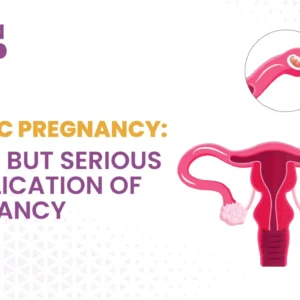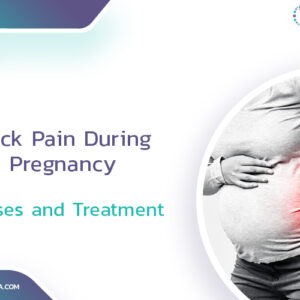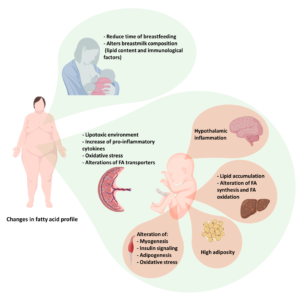Fibroids are a common concern among women of reproductive age, often leading to questions about their impact on fertility and pregnancy. If you have fibroids and are considering pregnancy, it’s important to understand how these benign tumors can affect your journey to motherhood. This blog post will explore the relationship between fibroids and pregnancy, addressing concerns and providing helpful information for women in this situation.
What Are Fibroids?
Fibroids, also known as uterine leiomyomas or myomas, are non-cancerous growths that develop in or on the uterus. They vary in size, number, and location, and can be classified into several types:
- Intramural Fibroids: These develop within the muscular wall of the uterus.
- Submucosal Fibroids: These protrude into the uterine cavity.
- Subserosal Fibroids: These extend beyond the outer surface of the uterus.
- Pedunculated Fibroids: These are attached to the uterus by a thin stalk.
Can You Get Pregnant with Fibroids?
Yes, it is possible to get pregnant with fibroids. Many women with fibroids conceive naturally and have successful pregnancies. However, the impact of fibroids on fertility and pregnancy varies depending on their size, number, and location. Here’s how fibroids might affect your chances of conceiving and carrying a pregnancy:
Impact on Fertility.
The impact on the weather you will get pregnant depends on the types of the Fibroid.
- Intramural Fibroids: These may interfere with the implantation of the embryo if they distort the uterine cavity.
- Submucosal Fibroids: These are the most likely to affect fertility by altering the shape of the uterine cavity, interfering with sperm movement, or preventing embryo implantation.
- Subserosal Fibroids: Typically, these do not affect fertility as they grow on the outer surface of the uterus and do not interfere with the uterine cavity.
Impact on Pregnancy.
The impact of the fibroid on pregnancy bleeding or miscarriage depends on the types of the Fibroid.
- First Trimester: Fibroids can increase the risk of early pregnancy loss, especially if they distort the uterine cavity.
- Second Trimester: Growing fibroids may cause pain and discomfort due to their increased blood supply. Rapid growth can outstrip their blood supply, leading to degeneration and severe pain.
- Third Trimester: Large fibroids can affect the baby’s position and increase the risk of preterm birth or complications during delivery, such as obstructed labor or the need for a cesarean section.
Managing Fibroids During Pregnancy
If you have fibroids and are planning to conceive or are already pregnant, it’s important to work closely with your healthcare provider to manage your condition. Here are some steps to consider:
- Pre-Pregnancy Evaluation: If you know you have fibroids, consult with your doctor before trying to conceive. They may recommend imaging tests like an ultrasound or MRI to assess the size, number, and location of the fibroids.
- Regular Monitoring: During pregnancy, regular prenatal visits are crucial to monitor the growth of fibroids and their impact on the pregnancy. Your doctor will keep an eye on the size and position of the fibroids to anticipate any potential complications.
- Pain Management: If fibroids cause pain during pregnancy, your doctor may recommend pain relief options such as acetaminophen. In severe cases, other medications or interventions may be necessary.
- Delivery Planning: Depending on the size and location of the fibroids, a planned cesarean section might be recommended to avoid complications during labor and delivery.
What happens when you are pregnant with Fibroids and effects on Baby Size and Delivery.
having fibroids can raise concerns about how they might affect your baby’s size and the delivery process. Understanding the potential impacts and managing them effectively is crucial for ensuring a healthy pregnancy and delivery. I will explain what happens when you are pregnant with fibroids and how they can affect your baby and delivery.
Potential Effects on Baby Size
Generally, fibroids do not directly affect the baby’s size. However, there are a few scenarios where fibroids can indirectly influence fetal growth:
- Space Occupation: Large fibroids can occupy space in the uterus, potentially limiting the area available for the baby to grow. This might lead to restricted fetal growth, although it is not very common.
- Impaired Blood Flow: In rare cases, fibroids might affect the blood flow to the placenta, which can impact the nutrients and oxygen supplied to the baby, potentially affecting fetal growth. Regular monitoring through ultrasounds can help detect any such issues early on.
Potential Effects on Delivery
Fibroids can impact the delivery process in several ways, depending on their size, location, and number:
- Positioning Issues: Large fibroids, especially those located near the cervix or lower uterine segment, can obstruct the baby’s descent into the birth canal, leading to malposition or breech presentation. This can complicate vaginal delivery and may necessitate a cesarean section (C-section).
- Preterm Labor: Fibroids can increase the risk of preterm labor, especially if they cause significant discomfort or uterine irritability. Close monitoring and medical management can help mitigate this risk.
- Cesarean Section: The presence of large or strategically positioned fibroids often leads to the recommendation of a C-section to avoid complications during labor. Fibroids can interfere with the natural progression of labor, making vaginal delivery more challenging.
- Postpartum Hemorrhage: Fibroids can increase the risk of postpartum hemorrhage (excessive bleeding after delivery) due to their potential to interfere with the uterus’s ability to contract effectively after birth. Your healthcare provider will be prepared to manage this risk if necessary.
Tips for a Smooth Pregnancy with Fibroids
- Stay Informed: Educate yourself about fibroids and their potential impact on pregnancy. Knowledge empowers you to make informed decisions and actively participate in your care.
- Follow Medical Advice: Adhere to your healthcare provider’s recommendations for monitoring and managing fibroids. Regular prenatal visits and following prescribed treatments are crucial.
- Listen to Your Body: Pay attention to any unusual symptoms or changes in your body. Report significant pain, bleeding, or other concerns to your healthcare provider promptly.
- Seek Support: Connect with other women who have experienced pregnancy with fibroids. Support groups and online communities can provide valuable emotional support and practical advice.
Treatment Options Before Pregnancy
If fibroids are significantly impacting your fertility or causing severe symptoms, treatment options are available:
- Medications: Hormonal treatments can help shrink fibroids, but these are typically temporary solutions and not recommended when trying to conceive.
- Surgery: Myomectomy, a surgical procedure to remove fibroids, is an option for women who wish to preserve their fertility. This procedure can be performed via hysteroscopy, laparoscopy, or open surgery, depending on the size and location of the fibroids.
- Minimally Invasive Procedures: Uterine artery embolization (UAE) is a minimally invasive procedure that blocks blood flow to fibroids, causing them to shrink. However, its impact on future fertility is still under study, and it may not be recommended for women planning to conceive.
Conclusion
While fibroids can pose challenges to fertility and pregnancy, many women with fibroids successfully conceive and give birth to healthy babies. The key is understanding how fibroids may affect your individual situation and working closely with your healthcare provider to manage them effectively. If you have fibroids and are considering pregnancy, proactive planning and regular monitoring can help ensure a safe and healthy pregnancy journey.
Remember, every woman’s experience with fibroids and pregnancy is unique. Consulting with a fertility specialist or an obstetrician who is experienced in managing fibroids can provide personalized guidance and support tailored to your needs.






